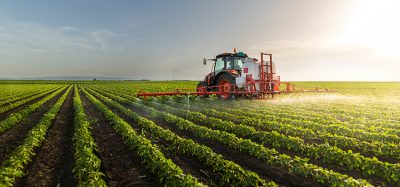Massive Uganda food poisoning incident provides valuable lesson
- Like
- Digg
- Del
- Tumblr
- VKontakte
- Buffer
- Love This
- Odnoklassniki
- Meneame
- Blogger
- Amazon
- Yahoo Mail
- Gmail
- AOL
- Newsvine
- HackerNews
- Evernote
- MySpace
- Mail.ru
- Viadeo
- Line
- Comments
- Yummly
- SMS
- Viber
- Telegram
- Subscribe
- Skype
- Facebook Messenger
- Kakao
- LiveJournal
- Yammer
- Edgar
- Fintel
- Mix
- Instapaper
- Copy Link
Posted: 12 October 2020 | Chris Elliott | No comments yet
Ahead of official publication of their key recommendations, Professor Chris Elliott of Queen’s University Belfast, offers his initial insights into the Uganda food poisoning outbreak he and his team helped resolve.


It has been widely warned that many more people will die as a result of starvation caused by the Covid pandemic, rather than from the virus itself. In such a climate, the WFP’s work becomes even more important.
Last week, Queen’s University Belfast published a report which explained how we discovered the cause of a major food poisoning outbreak in Uganda that led to many hundreds to become ill and a number of tragic fatalities. The food in this incident had been provided by the WFP; the cause of the crisis was a result of some toxic seeds from a plant called Jimsonweed which had accidentally entered a soy supply chain. This contaminated material became a constituent of several batches of ‘Super Cereal’ destined for Uganda.
We will soon be publishing our insights in a world leading scientific journal which will detail how this event occurred and offer recommendations on how to prevent any reoccurrences. Here, I offer readers of New Food a preview of this study and our main findings.
Tropane Alkaloids
Most of us are aware that a lot of value chains are complex and vulnerable to contamination from many forms of man-made chemical and natural toxins. Particularly in food destined for the developed world, there are a range of controls and checks put in place to ensure that it is safe and free from harmful levels of such contaminants. However, in the WFP case, the contaminant in question is seldom checked for (anywhere in the world), and only has limited legislation in Europe.
These toxins are Tropane Alkaloids, which in the Uganda case, came from a plant known as Jimsonweed. This is a plant known as an ‘invasive species’, and due to a range of factors, including climate change, is appearing in regions across the world where it has never been observed before. Many organisations, such as the European Union, are now reviewing data in an effort to put in place stringent regulations. This will have major implications for many businesses that trade in a range of agricultural commodities. We believe strict maximum limits are unlikely to be attainable by many supply chains and may cause dire supply issues and huge impacts to farmers in the developing world.
Our second major finding involved looking at the link between pesticide use, the growing market in organic food, and some of the unintended consequences of market shifts. Many consumers now demand no or very low levels of pesticides in their food. Although this is an understandable request, the use of such substances is vital way if we are to control crop contamination.
Furthermore, we believe that the implementation of a range of control measures (which shall be detailed in the upcoming publication of recommendations) will help prevent the contamination of food with Tropane Alkaloids and the early detection of contaminated supply chains. There must be a partnership approach between farmers, processors and regulatory authorities, and the a range of robust support tools for supply chains.
The tragic Ugandan case study should act as a stark warning to many in the agriculture and food industry, as well as regulators, that with changing demands for how food is produced, coupled with our rapidly changing climate, new food safety risks will undoubtedly emerge.
Related topics
Contaminants, COVID-19, Food Fraud, Food Safety, Pathogens, Pesticides, Supply chain







